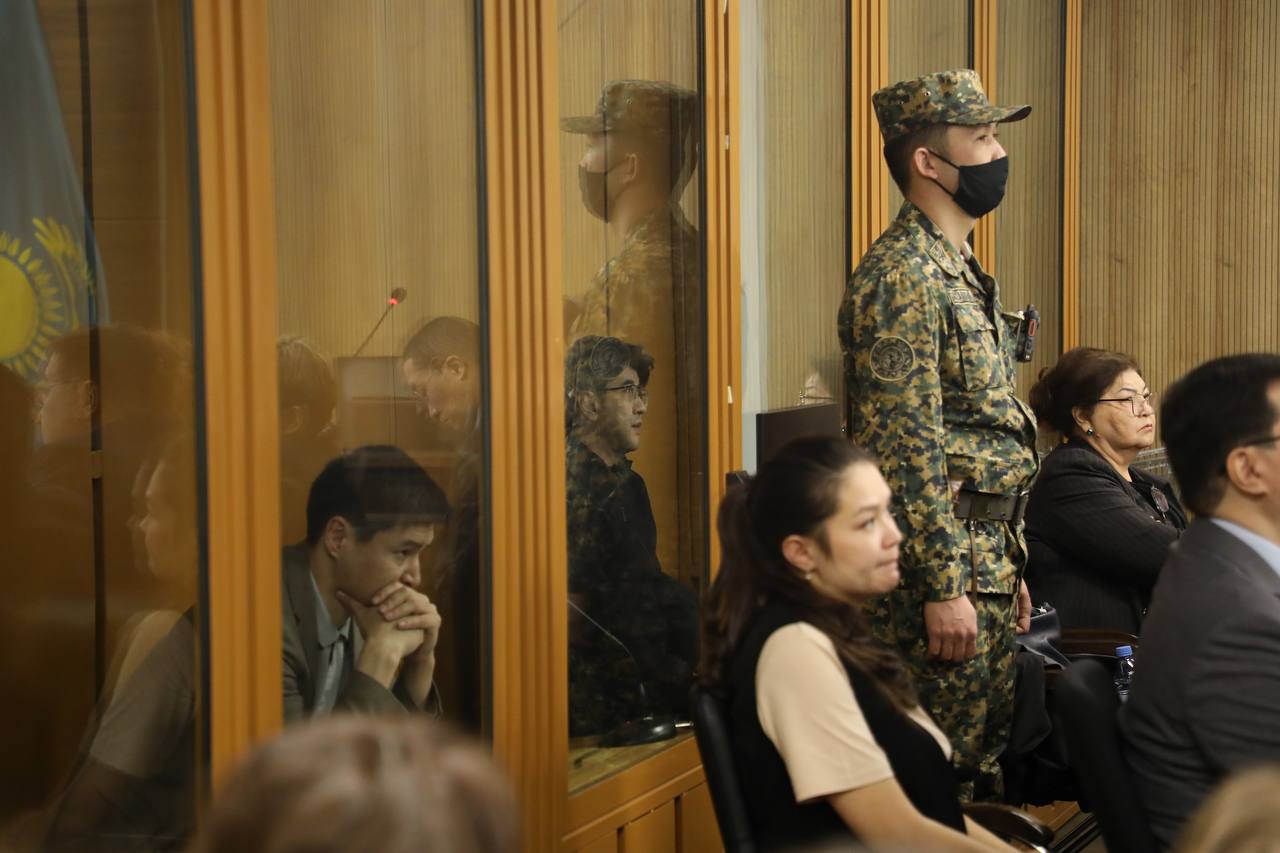An op-ed by Jamilya Nurkanova, for Vlast.
The jury trial of Kuandyk Bishimbayev, the former minister of economy, kicked off in late March in a criminal court in Astana, bringing the debate about domestic violence into the nationwide spotlight and kick-starting a conversation on how victims of domestic abuse are perceived in Kazakhstan.
The broadcasting of trials is a rare practice in Kazakhstan. Because of the resonance of the case people have been glued to the live streaming of the court hearings, bringing front and center the discussion about violence against women.
The Case
Bishimbayev, 43, is accused of beating and killing his 31-year-old wife Saltanat Nukenova at a restaurant his family owns, in November last year. Bishimbayev requested that the trial should be decided by a jury, not a common solution for criminal proceedings in Kazakhstan. The court is streaming the trial via YouTube and the media is covering it with meticulous detail.
Because of the amount of detail disclosed from the lawyers’ debates, the testimonies, and all other declarations that have been live-streamed, the case has gripped the hearts and minds of millions. Kazakhstan’s society can observe in real time how domestic violence, a cultural taboo, is no longer “a private matter” to be discussed behind closed doors, but a topic of public concern, subject to a massive following and a heated discussion both online and offline.
This is also the first time a former senior government official is being prosecuted for a case of intimate partner violence (IPV), setting a precedent for the criminal justice system in prosecuting gender-based violence.
The Problem
Around 400 deaths are recorded in Kazakhstan each year as a result of domestic violence. The Bishimbayev case could potentially bring hope for justice in a society that has been plagued with this systemic type of violence.
Now, on the one hand, the public and the jury can test their tolerance towards gender based violence and alter our social norms and demand criminalization of violence against women.
Importantly, this trial showcases and highlights the dynamics and the cycle of domestic violence, abuse, manipulation, and physical assault. As of today, most cases of domestic violence with life-threatening injuries are tried as civil offenses with a punishment of maximum 15 days of detention or a fine.
In 2017, law enforcement officials lobbied the government to decriminalize this form of violence. They justified this move by arguing that victims of abuse were reluctant to step forward and report it, that the act of violence in itself was difficult for them to prove, and that a non-criminal approach to dealing with abusers would be better in the longer run for the families.
In light of widespread brutality and continued impunity of abusers, the society has repeatedly called for overturning the decision and enshrining the criminalization of domestic violence. Instead, only those few cases that generate popular uproar make it to the courts, leaving the vast majority unheard.
The Way Forward
Most of the debate now centers on two issues: The pervasiveness of domestic violence and the chronic impunity of the perpetrators, especially high-profile personalities. But starting from the vocabulary, the narrative could change.
Rachel Snyder, a professor at American University, said it is time to properly define the terror that battered women face each day, calling it “intimate partner terrorism”. It is important to facilitate discussions and conduct research on the push and pull factors for violent behavior as the academic literature demonstrates that violence against women is correlated with a general acceptance of violence in society, and that there is a link between the number of people who support violence against women and the number of people who support violent extremism.
Moreover, it is critical to understand that domestic violence should be tackled with the coordination of the law enforcement systems, healthcare system, community based interventions and education. For instance, there is enough data that shows that the first count of strangulation in a relationship leads to repeated strangulations with higher lethal risks. In addition, it is highly recommended that nurses and medical personnel be trained as first responders to the cases of domestic abuse, as their protocol and danger assessment could lead to better measurement of violence gradation and that information could be passed to the law enforcement.
It is evident that despite ongoing efforts, the quest for eradication of violence against women is at its beginning. Perhaps, using the right vocabulary could lead to better policies and laws, which together could give hope to the people of Kazakhstan.
The Bishimbayev case could raise awareness about the ways to detect, prevent and react to domestic abuse and help people around us and it can serve as a deterrent for future incidents of domestic abuse across the country through criminalization. Finally, a fair conclusion of this trial would prove that perpetrators of any rank would be held accountable.
Поддержите журналистику, которой доверяют.









